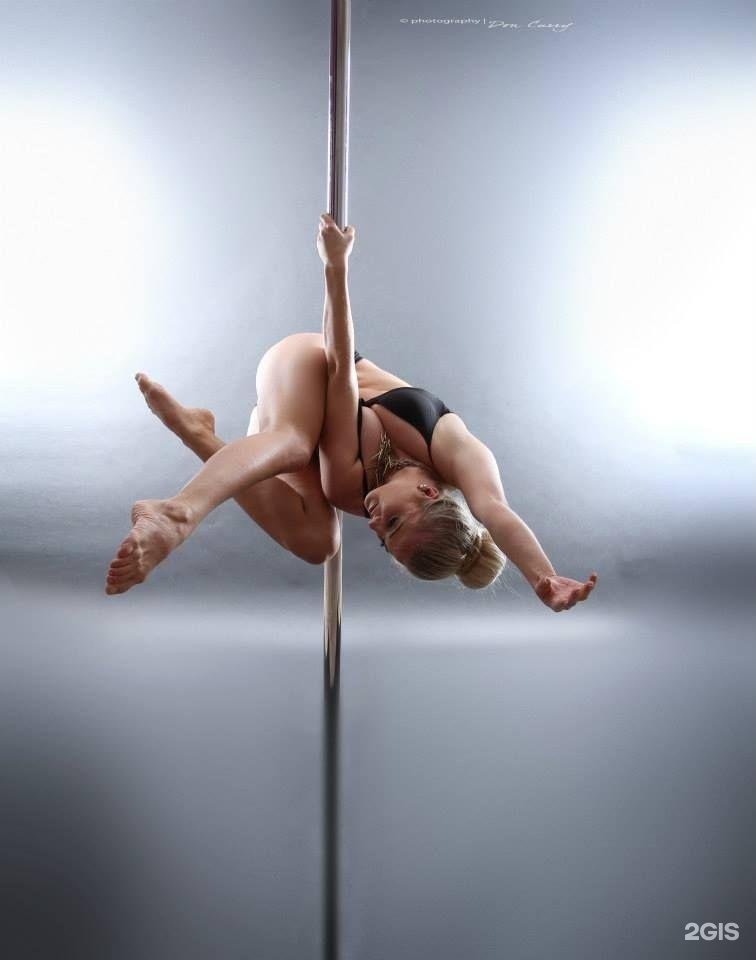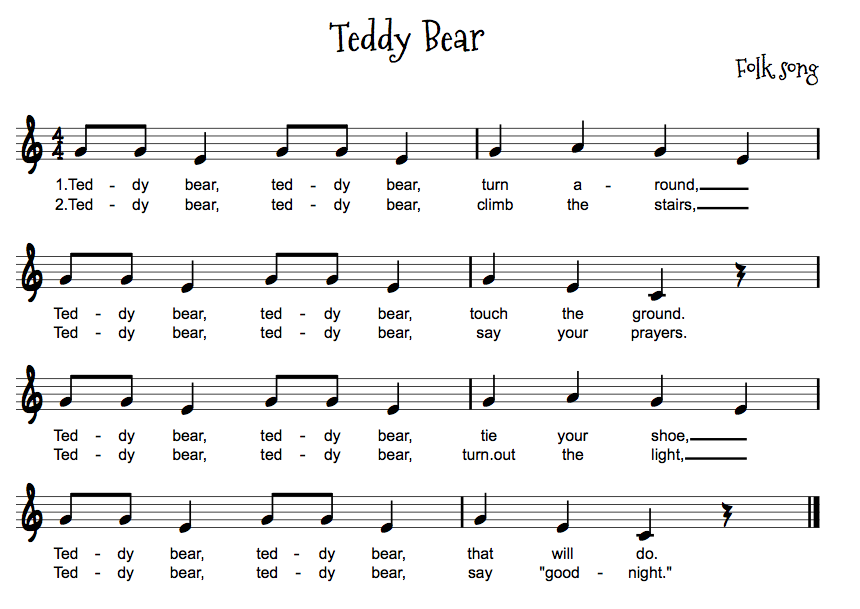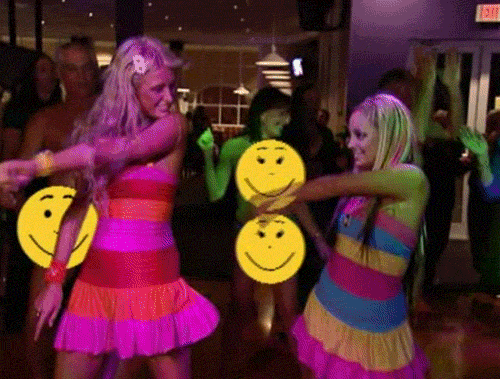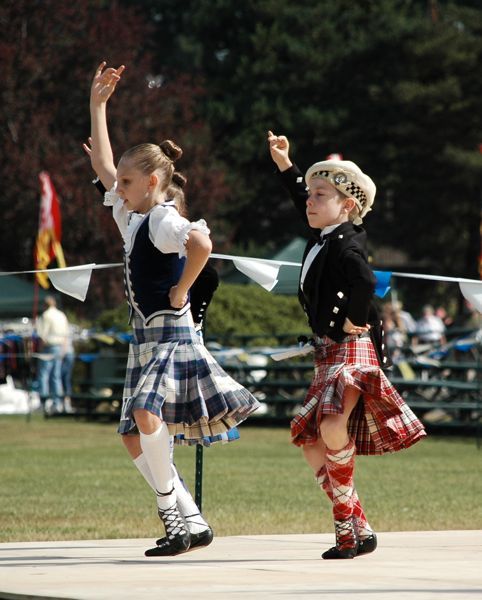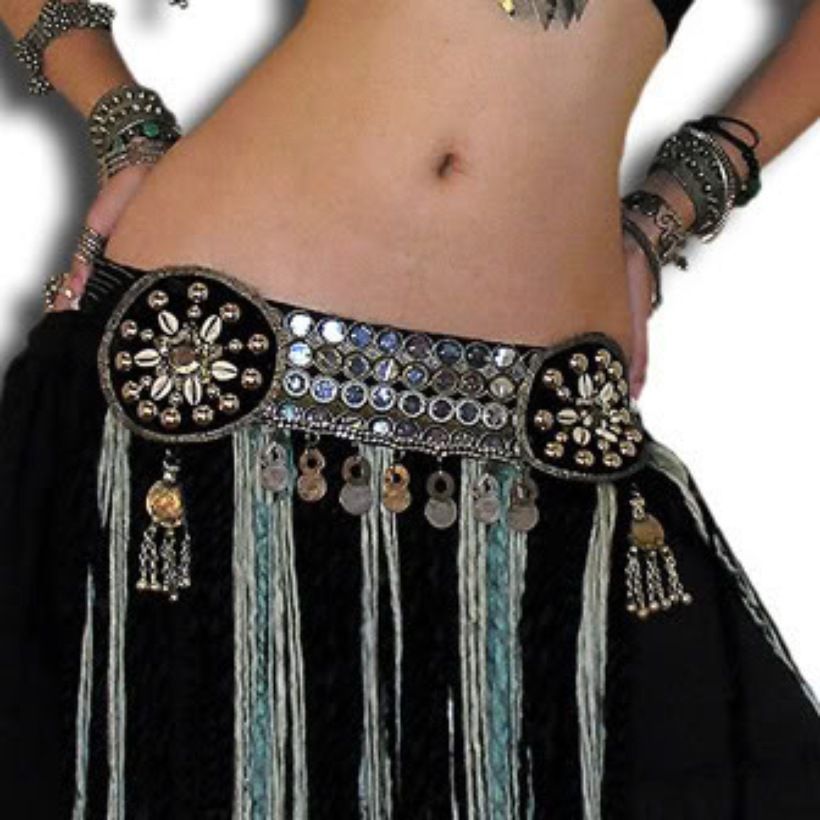How to break dance easy
25 Craziest Breakdance Moves
If you think you’ve seen the best dance moves, then think again. Breakdancing utilizes elements of martial arts, gymnastics, and even yoga. Today, breakdancers, better known as Bboys or Bgirls, have pushed the limits of the human body to the point of almost defying gravity. Straight from the underground dance scene, get ready to witness the top 25 Craziest Breakdance Moves!
We start with the most recognizable move- the windmill. Originally borrowed from Kung fu, this move was used to spring up from the floor without using your hands. Now, the move has evolved into a continuous motion in which the dancer can perpetually rotate around his or her upper body. You can use your hands, forearms, elbows, or head to propel your momentum. The variations are endless!
Warning: Do not do this move on concrete… for obvious reasons. The headspin is probably the most iconic and most unnatural move in breakdancing. Although its origins are derived from capoeira, Kid freeze has claimed to have invented the ‘continuous headspin. ’ Today, the move has been mastered by bboys around the world. In fact, Bboy Aichi from Japan holds the Guinness World record for 135 rotations in 1 minute.
You’ll come to find that many bboy moves do not actually look exactly like they sound. Such is the case for the jackhammer. This move may look impossible, but it’s actually just a matter of manipulating balance. It utilizes a technique called “stabbing,” in which you support your entire bodyweight by placing your elbow on the stomach at a 90-degree angle. With the proper setup and a little leg push, the jackhammer is born.
Beginners, do not try this move without proper training and supervision. The headslide is an unnatural move and requires a lot of strength and support from the neck muscles. Just keep one thing in mind when doing this move: make sure you have hair.
The ‘baby’ comes from a baby freeze, one of breakdancing’s most basic freezes. Basically, you quickly move in a circle while in this freeze. Not many bboys consider this a typical powermove yet, but it sure is becoming popular.
sunshine-hurricane.tumblr.com/
This move originated in Capoeira, a traditional Brazilian martial art. Both hands push off the ground while the legs kick back and forth in a scissor-like motion to a simulate hopping. This may be a surprise, but holding a one-hand handstand isn’t a prerequisite. The key to this move is the ‘push and catch’ of each hop. As long as you master this, you can simply redistribute balance for a split second in between each hop before pushing off again.
Borrowed from gymnastics, this move requires a lot of upper body strength, relying on the arms, back, and core. Basically, the legs move in a circle around the body without touching the ground. The wider the legs are, the easier it is to carry momentum and to keep the hips high. So, just a helpful hint: having a wide straddle split will make this move a whole lot easier.
If you performed this move 20 years ago, people thought that you could defy all laws of physics. But today, it is regularly practiced power move. It originated from doing a flare with the body almost inverted and hips exceptionally high. A little hop when traveling from one hand to the other is what makes this move extraordinarily different. There are many variations, from keeping the legs piked together to catching with the forearms. It’s such a beautiful move that even gymnasts have begun adding it into floor routines.
But today, it is regularly practiced power move. It originated from doing a flare with the body almost inverted and hips exceptionally high. A little hop when traveling from one hand to the other is what makes this move extraordinarily different. There are many variations, from keeping the legs piked together to catching with the forearms. It’s such a beautiful move that even gymnasts have begun adding it into floor routines.
Buddha spins are another recently invented move. People used to think this move was athletically difficult, yet it has become more and more common for bboys everywhere. You actually shift your body weight from one hand to the other. The hands control the rotation while the core is kept tight throughout the entire move.
Another gymnastics based move, the deadman float relies on momentum more than strength. The prerequisite is the UFO float, a similar move where the knees are bent and closer to the arms. However, the deadman is different because it takes a lot more core strength.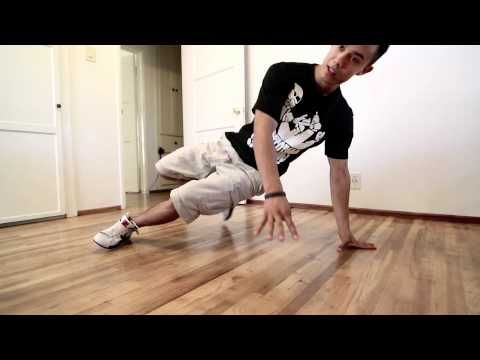 Imagine doing a planche, but instead of holding the position, you move your entire body in a circle. Sounds difficult, right?
Imagine doing a planche, but instead of holding the position, you move your entire body in a circle. Sounds difficult, right?
Instead of using the palm of the hand to support your weight, someone thought it was a good idea to use the entire forearm instead. You get slightly better balance, but the shoulder now absorbs more shock. As depicted above, variations can make this move look really cool.
This move is an illusion. Instead of both hands being flat on the ground, one hand supports all of the weight. While spinning on the palm of this supporting hand, the other hand is placed conveniently on top. You need two things in order to maintain momentum- one is a strong set-up initiated by the swinging of the legs and the other is a stable handstand in order to stay in the upright position. To generate even more momentum, bboys tighten the core and gradually bring the legs together.
The name of this move comes from the ‘V’ shape made by keeping the legs afloat. You need both quad muscle strength and a lot of hip flexibility to support your weight on your hands while bending forward. Speed is what makes boomerangs dynamic, so most bboys use other powermoves to transition into this one.
Speed is what makes boomerangs dynamic, so most bboys use other powermoves to transition into this one.
Have you ever wondered what ballerina pirouette looks like upside-down? Well, wonder no more. The 1990 is a spinning one-handed handstand. Bboy Cico is famous for cranking out these spins almost effortlessly. In fact, he holds the world record for 27 spins.
The air chair is exactly what it sounds like. But instead of “sitting” on an actual chair, you hold your body up with one hand while in mocked seated position. If you transition into this move from a windmill with enough momentum, you get the air chair spin. Some bboys like to wear a smooth cloth or glove covering the palm to maintain momentum.
This move is insane. I’ve decided to call this the ‘floating gremlin’ for lack of a better term (That’s right, this is another relatively new move). In regular Gremlin spins, bboys spin around a full 360 degrees on one hand without stabbing. In this variation, the hips are higher than normal. You’re going to need some powerful flares to transition into this move.
You’re going to need some powerful flares to transition into this move.
What better way to make a move harder than to spin on your elbow instead of on your hand? With that kind of creativity, you’ll arrive at the elbow spins. You will often see this concept in many variations of other powermoves. This move is another illusion. Instead of spinning on the very tip of the elbow, you actually use the base of the forearm. Of course, a bit of soft padding maintains momentum and reduces pain due to friction.
Again, you can upgrade difficulty by switching to your elbows. The hips are low in the front so muscles in the lower back must do more work to bring the hips high in the back. You end up leaning forward so much that you reach a posture similar to the ‘scorpion’ in yoga. The flexibility and abnormal strength required is what makes this move difficult.
So, you’ve mastered the air flare… What else is there to do? Simple, master the air flare on your elbows! You don’t really use your elbows to propel you in this move.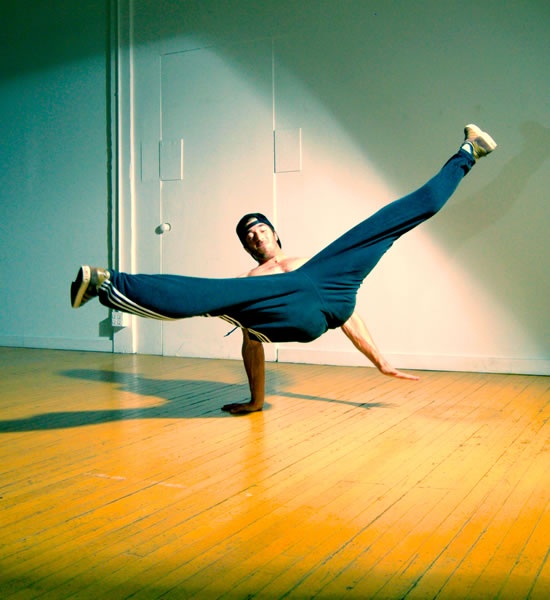 Instead, the entire forearm absorbs the shock. This move looks awesome- enough said.
Instead, the entire forearm absorbs the shock. This move looks awesome- enough said.
I know what you’re thinking. If I weighed less than 100 pounds and had short legs, I could easily come up with this move. Well, you may be right. Bboy Taisuke is known for his quick movements and flow. He manages to throw his body up in the air with ease even when it seems that he lacks a proper wind-up. Don’t be surprised to find that this gif is in real time.
It’s almost impossible to imagine how this move was invented, but someone did it. After much practice, Bboy Uzee Rock has mastered the art of spinning on the very tip of his elbow while his body is parallel to the ground.
If you can already air flare, what would be the next step? Thats right! You just rotate your body an extra 180º degrees so that you land on your shoulder instead of your hands. No big deal right? Use a gym mat or soft ground when practicing because this move takes a lot of guts.
Put on some elbow pads because this move will hurt.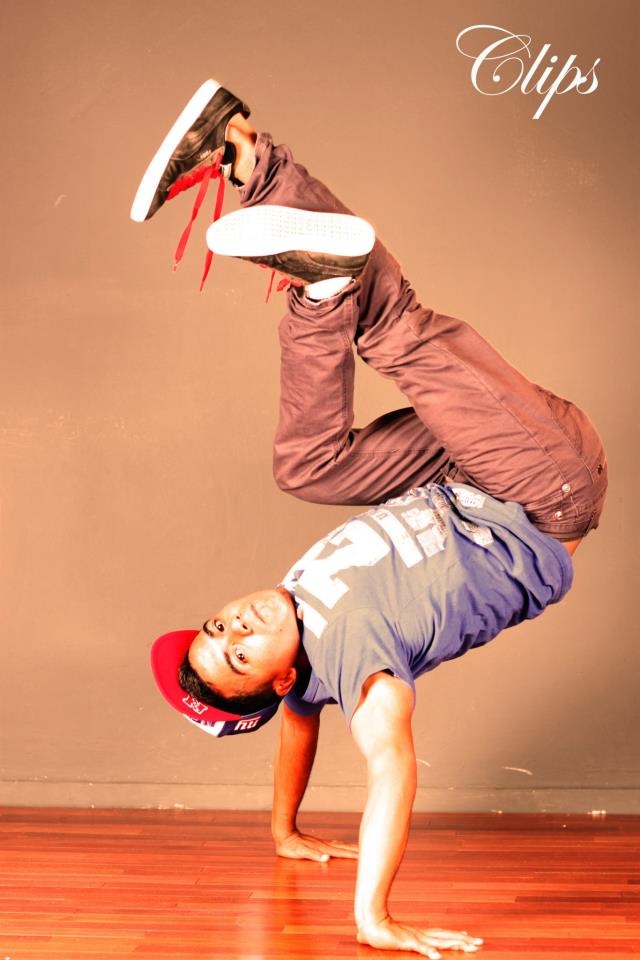 There are no tricks to making this move easier; you have to be in shape and become comfortable stringing together power moves. At this point in practice, it’s really just about going for it. Some bboys have even managed to put together 6 of these bad boys in a row.
There are no tricks to making this move easier; you have to be in shape and become comfortable stringing together power moves. At this point in practice, it’s really just about going for it. Some bboys have even managed to put together 6 of these bad boys in a row.
If you’ve made it this far in performing crazy breakdance moves, you still have one task ahead of you- the one arm air flare. This move just became popular among many ‘powermovers’ around the world. When done the right way, it can look very graceful. When done the wrong way, it can be very dangerous.
This move is absolutely ridiculous. Some of you may think it’s amazing that this guys’ arm doesn’t just collapse on the spot. You need a lot of shoulder strength to hop high enough, rotate fully, and catch safely on the same arm. The bboy in this gif is named ‘Bboy Kill,’ for obvious reasons.
Lists Going Viral Right Now
Photo: Featured Image - Pixabay.com (Public Domain), 1.![]() just-mathewww via tumblr (Fair Use: Illustrative Purposes Only), 2. Hiphopdanceoff.blogspot.com (Fair Use: Illustrative Purposes Only), 3. Comecorrect, Come-correct-breakdance-crew, CC BY 3.0 , 4. B2frison, Airflare, CC BY-SA 4.0 , 5. Artofbboying.tumblr.com (Fair Use: Illustrative Purposes Only), 6. Gifer.com (Fair Use: Illustrative Purposes Only), 7. Pinterest.com (Fair Use: Illustrative Purposes Only), 8. , 9. anonymous, Freeze (Breakdance move), CC BY-SA 3.0 , 10. PxHere.com (Public Domain), 11. Andrew-englishdiary.blogspot.com (Fair Use: Illustrative Purposes Only), 12. boltron, B-boy, CC BY-SA 2.0 , 13. Pexels.com (Public Domain), 14. Joe Mabel, Sundiata hip-hop 2007 - 07, CC BY-SA 3.0 , 15. Paralingua, Break-dance, CC BY-SA 3.0 , 16. anonymous, Nike float, CC BY-SA 3.0 , 17. Pinterest.com (Fair Use: Illustrative Purposes Only), 18. PxHere.com (Public Domain), 19. Jarek Tuszyński / CC-BY-SA-3.0, Street Acrobats in DC - 2013-06-07 - 05, CC BY-SA 3.0 , 20. Pixabay.com (Public Domain), 21.
just-mathewww via tumblr (Fair Use: Illustrative Purposes Only), 2. Hiphopdanceoff.blogspot.com (Fair Use: Illustrative Purposes Only), 3. Comecorrect, Come-correct-breakdance-crew, CC BY 3.0 , 4. B2frison, Airflare, CC BY-SA 4.0 , 5. Artofbboying.tumblr.com (Fair Use: Illustrative Purposes Only), 6. Gifer.com (Fair Use: Illustrative Purposes Only), 7. Pinterest.com (Fair Use: Illustrative Purposes Only), 8. , 9. anonymous, Freeze (Breakdance move), CC BY-SA 3.0 , 10. PxHere.com (Public Domain), 11. Andrew-englishdiary.blogspot.com (Fair Use: Illustrative Purposes Only), 12. boltron, B-boy, CC BY-SA 2.0 , 13. Pexels.com (Public Domain), 14. Joe Mabel, Sundiata hip-hop 2007 - 07, CC BY-SA 3.0 , 15. Paralingua, Break-dance, CC BY-SA 3.0 , 16. anonymous, Nike float, CC BY-SA 3.0 , 17. Pinterest.com (Fair Use: Illustrative Purposes Only), 18. PxHere.com (Public Domain), 19. Jarek Tuszyński / CC-BY-SA-3.0, Street Acrobats in DC - 2013-06-07 - 05, CC BY-SA 3.0 , 20. Pixabay.com (Public Domain), 21. BeeboyStiGGe, Baby Freeze, CC BY 3.0 , 22. Pixabay.com (Public Domain), 23. E. Başak from ankara/nicosia, turkey/kktc, B-boy breakdancing, CC BY-SA 2.0 , 24. Mika Väisänen, Headspin, CC BY-SA 4.0 , 25. WikipediaCommons.com (Public Domain)
BeeboyStiGGe, Baby Freeze, CC BY 3.0 , 22. Pixabay.com (Public Domain), 23. E. Başak from ankara/nicosia, turkey/kktc, B-boy breakdancing, CC BY-SA 2.0 , 24. Mika Väisänen, Headspin, CC BY-SA 4.0 , 25. WikipediaCommons.com (Public Domain)
List25 Daily List25 Weekly
How to breakdance step by step
The following 3 videos will teach you how to breakdance step by step. We recommend that you watch these lessons in order as they are arranged from easiest to hardest. These moves come directly from our breakdancing courses which you should check out if you want to learn more. A word of caution, you must be careful when you attempt these moves. Be sure to study the movements very carefully and slowly and then ease into them. For other online dance classes click here.
Free mini video course for break dance:
Beginner break dance moves
Breakdancing move #1: 3 Step
The 3 step is one of the most popular beginner break dance moves. It consist of 3 steps that are done in a circle. In this move you will start with one leg extended in front of you and then will switch the legs as fast as you can so that the other leg is extended, from there you bring the leg side where you end up in a kind of push up position. Learn how to sync the arm switches with your leg switches.
It consist of 3 steps that are done in a circle. In this move you will start with one leg extended in front of you and then will switch the legs as fast as you can so that the other leg is extended, from there you bring the leg side where you end up in a kind of push up position. Learn how to sync the arm switches with your leg switches.
Want More?
The Complete Breakdancing Course For beginners (No experience needed)
Learn simple but impressive moves step by step! You will learn footwork moves, ground moves as well as freezes. This video course has 3 modules with +3 hours of video instruction. Delivered through instant online access.
Learn more & Buy it here (Click here)
Breakdance move #2: Corkscrew Up:
This is another cool bboy move. The corkscrew up is perfect for when you need to get up from the ground in a “cool” and smooth way. You can do this move on it’s own or from any other combination of moves.Here you will develop strength and balance as you push off the floor to spin upwards and around.
The corkscrew up is perfect for when you need to get up from the ground in a “cool” and smooth way. You can do this move on it’s own or from any other combination of moves.Here you will develop strength and balance as you push off the floor to spin upwards and around.
One more to go below!
Want More?
The Complete Breakdancing Course For beginners (No experience needed)
Learn simple but impressive moves step by step! You will learn footwork moves, ground moves as well as freezes. This video course has 3 modules with +3 hours of video instruction. Delivered through instant online access.
Learn more & Buy it here (Click here)
Break dance move #3: The baby freeze
Learn how to do a baby freeze move in this video.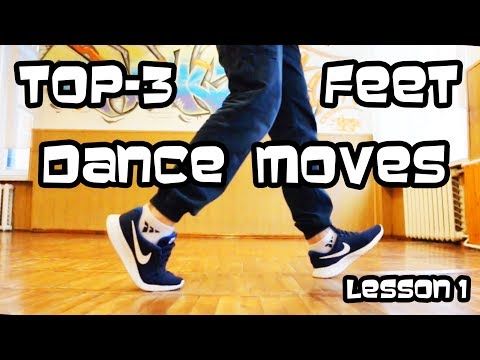 Freezes in Breakdancing are meant to draw attention to the dancer and are usually put in at the end of some footwork combination like the 3-step above! The baby freeze is great to start out with since its small. It still requires lots of coordination and practice so take it slowly and make sure you don’t skip anything.
Freezes in Breakdancing are meant to draw attention to the dancer and are usually put in at the end of some footwork combination like the 3-step above! The baby freeze is great to start out with since its small. It still requires lots of coordination and practice so take it slowly and make sure you don’t skip anything.
Get Barry’s full course now:
The Complete Breakdancing Course For beginners (No experience needed)
Learn simple but impressive moves step by step! You will learn footwork moves, ground moves as well as freezes. This video course has 3 modules with +3 hours of video instruction. Delivered through instant online access.
Learn more & Buy it here (Click here)
History of Breakdancing:
Breakdancing was founded by the black community and Puerto Rican kids in the 1970s.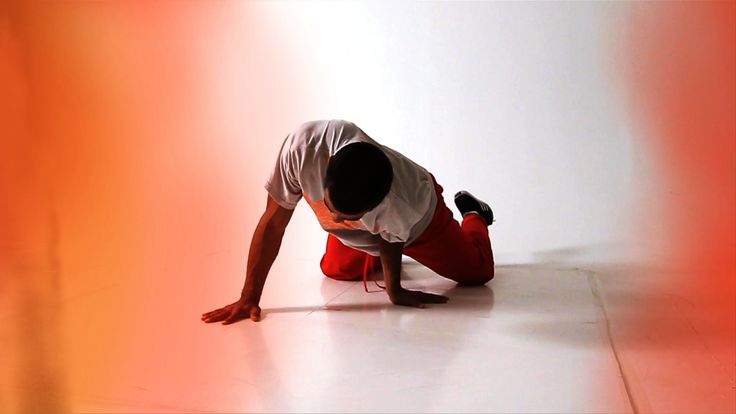 And it really became popular after James brown’s single “Get On The Good Foot” where his busted out his high energy footwork dancing. After that, the kids in New york started to copy his moves and eventually it evolved to be called b-boy or break dancing. At that time most of the style was ground footwork combinations without any of the fancy stuff you see today like windmills or back spins that are popular today. There were also breakdancing battles between gangs or clicks.
And it really became popular after James brown’s single “Get On The Good Foot” where his busted out his high energy footwork dancing. After that, the kids in New york started to copy his moves and eventually it evolved to be called b-boy or break dancing. At that time most of the style was ground footwork combinations without any of the fancy stuff you see today like windmills or back spins that are popular today. There were also breakdancing battles between gangs or clicks.
Another dance called “uprock” influenced the b-boy dancers. In this dance style, the dancers mimic fighting moves into rhythmic dance moves that opponents would use to ‘battle’ against one another.
The music is not restricted to Hip Hop anymore. These days dancers choose Techno, Jazz, electronic, pop and an other types of music that suites their style.
Other styles:
Back to free Hip Hop dance videos page
How to Ballroom dance
How to dance at clubs and parties
Online dance classes
Break dance training.
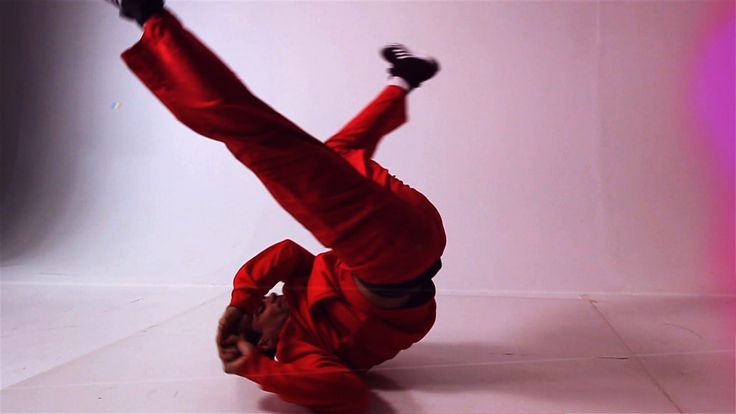 VIEW ALL LESSONS >>>
VIEW ALL LESSONS >>> Breaking or break dance (break dance) - one of the most spectacular areas of street dance, which includes torsion, energetic "runs" and sudden stops of the dancer (freez) during his exit. The dance style began to form in the early 70s in New York in the Bronx area. Only a few years have passed and from the underground dance breakdance has received worldwide fame and recognition. Today, breaking is one of the strongest dance subcultures, with a developed technique, system of events and a real street spirit. On this page you will see break dance lessons for beginners.
If you want to learn how to breakdance and feel that you can't do without a mentor, come to the Dragon Dance School for a trial breakdance lesson. Since 2000, we have been helping people learn how to move beautifully and feel the music. Already several thousand people have been trained and learned to dance. Even if you have never worked out before, even if you are not in good physical shape now, all this is easily fixable. You will understand that learning to dance is easy. Come for a free trial lesson.
Even if you have never worked out before, even if you are not in good physical shape now, all this is easily fixable. You will understand that learning to dance is easy. Come for a free trial lesson.
Break dance training for beginners: the right warm-up
Any dance lesson in any style, be it breaking or hip-hop dance, should begin with a warm-up. This allows you to warm up the body, muscles and ligaments. This is especially important for learning the lower break, since it uses the maximum resources of the body, which means that in order to swing to the fullest, you need to warm up a lot, maybe even sweat a little.
Break dance video lessons: top rock (top rock)
Top rock is what the dancer does before entering the lower elements. However, top rock should not be neglected, for a good dancer is easily recognized by the first moves of top rock. It's like a business card. Look online lessons on top rock and learn the elements suggested there. This will allow you to learn how to breakdance even at home.
However, top rock should not be neglected, for a good dancer is easily recognized by the first moves of top rock. It's like a business card. Look online lessons on top rock and learn the elements suggested there. This will allow you to learn how to breakdance even at home.
1. Break dance school: Top rock 1
2. Break dance lessons: Top Rock 2
3. Top Rock 3. Movement Break DANSA for beginners
4. TOP ROCK 4. Street Dance lessons 9000 9000 9000ours children and not only in Moscow. Sign up and come to a trial lesson
Basic technique: footwork (style)
Footwork or style is one of the main sub-styles in breakdance.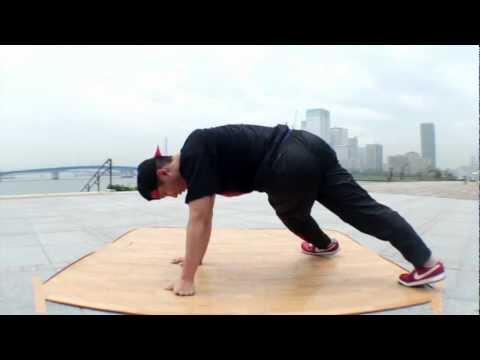 It includes, as the name suggests, "footwork". And indeed it is. A variety of "running", "cutting" and so on. Each bboy tries to stand out in footwork and do it in his own way. Therefore, it is important to learn the basics at the beginning, and then proceed to improvise and develop your own manner in footwork.
It includes, as the name suggests, "footwork". And indeed it is. A variety of "running", "cutting" and so on. Each bboy tries to stand out in footwork and do it in his own way. Therefore, it is important to learn the basics at the beginning, and then proceed to improvise and develop your own manner in footwork.
1. How to learn how to dance Break DANS: Sharchka
2. Break DANS LUCK: Six Steps
3. Online lessons BREAK DANSA: Three Steps 9000 9000
4. dance for beginners: CC's
Basic technique: Freez/Power trix
If you watched breakdance videos from battles, then you probably remember that during the dance, the b-boy can suddenly stop or freeze in the most incredible position.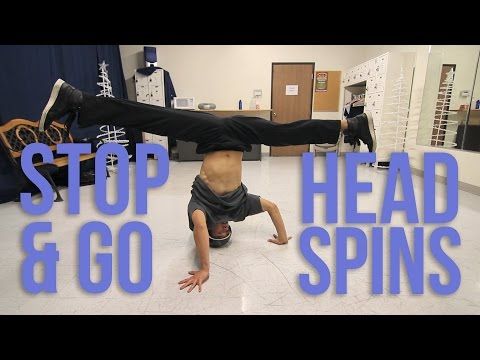 These stops are called "friezes". Also in breakdance, many elements are performed from a handstand, elbows, etc. This power substyle is called "trix". Watch break dance lessons and master the base of these directions.
These stops are called "friezes". Also in breakdance, many elements are performed from a handstand, elbows, etc. This power substyle is called "trix". Watch break dance lessons and master the base of these directions.
1. Break dance. Where to start: Balance
2. Freez 1. How to learn Break Dance Frisa
3. Video Dance Lessor Break 2
90144. Freez 3. Break dance lessons
Basic technique: Power move
Finally, we move on to the most spectacular part of break dance for many - power moves. These are power movements, all kinds of torsion on the head, back, various "air twists" and "air tracks".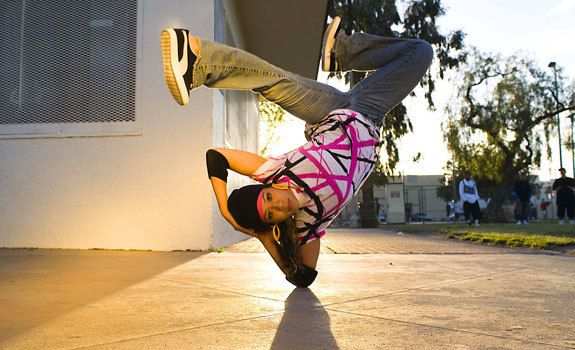 Indeed, power moves are the hallmark of breaking. In order to learn how to bray dance and perform complex elements, you will first need patience. Every break dance move requires thoughtful practice. Therefore, if something did not work out on the first try, do not be discouraged. Just do it again. Record your video. Compare with how it was explained in the video tutorial. A little work and everything will work out! You will learn to dance breakdance the way you have long wanted to!
Indeed, power moves are the hallmark of breaking. In order to learn how to bray dance and perform complex elements, you will first need patience. Every break dance move requires thoughtful practice. Therefore, if something did not work out on the first try, do not be discouraged. Just do it again. Record your video. Compare with how it was explained in the video tutorial. A little work and everything will work out! You will learn to dance breakdance the way you have long wanted to!
1. Basic rotation for beginners Backspin (Bek Spin)
2. Element Break Dansa Svips Swipe: Parsing and Training
3. Lessons of dance Break Dance: Turtle or "Turtle"
4. The most famous break dance element: Windmill / gelik / mill
The most famous break dance element: Windmill / gelik / mill
Routines
1. Break dance lessons: Combo 1.0002 2. Break dance training and online lessons: Combo 2
It is often easier to learn how to dance with an experienced trainer. Even if you are afraid that it will not work out and have never danced before, it is not scary. In our Dragon Dance School, we train those who come to study "from scratch". Sign up for a trial lesson and give yourself a dream come true!
Brief history of Soviet breakdance • Arzamas
You have JavaScript disabled. Please change your browser settings.
- History
- Art
- Literature
- Anthropology
I'm lucky!
History, Anthropology
What is Soviet breakdance and when did it appear? What did the first dance battles look like? Why did the style eventually die out in Soviet times? And how did he influence the birth of Russian rap? We tell about the history of Soviet breakdance
Author Olga Krupnik
Street dance is one of the elements of the hip-hop culture that originated in the New York working environment in the 1970s.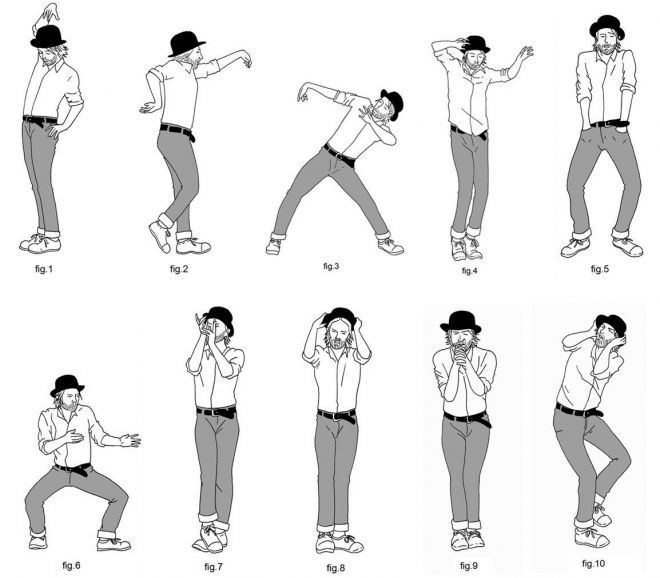 Breaking, the founding style of street hip-hop dance, DJ Lance Taylor, better known by his pseudonym Afrika Bambaataa, was the first to identify five components of hip-hop culture: MCing (rap), DJing, breaking, graffiti and knowledge (philosophy). He began the history of the development of the genre in the USSR.
Breaking, the founding style of street hip-hop dance, DJ Lance Taylor, better known by his pseudonym Afrika Bambaataa, was the first to identify five components of hip-hop culture: MCing (rap), DJing, breaking, graffiti and knowledge (philosophy). He began the history of the development of the genre in the USSR.
Breaking was brought to the USSR in the 1980s, and the popularity of the style peaked at 1985-1990s. This period will be called the first wave of breaking in Russia. The development of dance coincided with perestroika and was just as rapid. In a short time, breaking has gone from closed apartments to major festivals and cinema.
However, few predicted a long life for this dance style: it was considered an imported fashion that did not have a foundation for further development. With the collapse of the USSR, interest in the style really faded. Breaking returned to Russia only in the 2000s.
1980–1982
Olympics-80 and new fashion
Olympic bears.
 Moscow, 1980 © Roman Denisov / TASS
Moscow, 1980 © Roman Denisov / TASS The 1980 Summer Olympics opened the iron curtain, and American culture penetrated Russia: Pepsi-Cola, Fanta appeared on the shelves, and sneakers came into fashion. English has ceased to be a professional quality and has become an attribute of a good liberal arts education. Increasingly, translated books and anglicisms appeared in speech.
1983
Russian rock and first videocassettes
Still from the film "Rocky". Directed by John Avildsen. 1976 © Chartoff-Winkler Productions
Foreign tape recorders and video cassettes have appeared in some homes. And Hollywood action movies like "Rocky" have become an alternative to Central Television. 1983, among other things, was the heyday of Russian rock: in May, the first festival was held at the Leningrad Rock Club, and informal associations began to become the norm.
1984
Imported breakdancing, dyed sneakers and aerobics
This is the time of circus art and plastic theater. The main heroes of 1984 were the clown theater "Litsedei" and Vyacheslav Polunin. At the same time, mass production of the first domestic tape recorder "Electronics VM-12" began - it was sold everywhere. Now the video can be watched at home.
The main heroes of 1984 were the clown theater "Litsedei" and Vyacheslav Polunin. At the same time, mass production of the first domestic tape recorder "Electronics VM-12" began - it was sold everywhere. Now the video can be watched at home.
Breaking gradually penetrated the families of diplomats, employees of embassies and the Ministry of Foreign Trade: they got acquainted with the dance abroad. The rest copied the movements and tricks of the heroes of the first American films about break dancing: "Breakin'" (1984), "Breakin' 2: Electric Boogaloo" (1984) and "Beat Street" (1984).
There was also a request for everyday dance practices: aerobics became incredibly popular among women. The Melodiya record company even released a special soundtrack - a vinyl record for rhythmic gymnastics. So dance and bodily gymnastics became the norm.
Rhythmic gymnastics vinyl sleeve. 1985 © Melodiya Firm
1985 © Melodiya Firm The younger generation strove for individuality, and teenage fashion began to develop. Those who had the opportunity received clothes from abroad - mostly the children of wealthy parents. Others illegally bought it from peddlers. peddlers are private merchants who illegally bought things and currency from foreigners, and then sold them. patterns of Western models.
The most important attribute of street dancers is, of course, sneakers. In 1984, Chinese-made models were on sale, mostly black and brown. But dancing needs bright colors, so many people dyed sneakers themselves, by analogy with jeans.
1985
Breakdance on the Arbat and settlement of culture houses
In 1985, breaking ceased to be a dance of privileged youth and moved from apartments to gyms and dance floors. At the same time, the first professional dance groups appeared. The famous saxophonist and jazzman Alexei Kozlov created Break-Arsenal, a dance group based on the Arsenal musical group.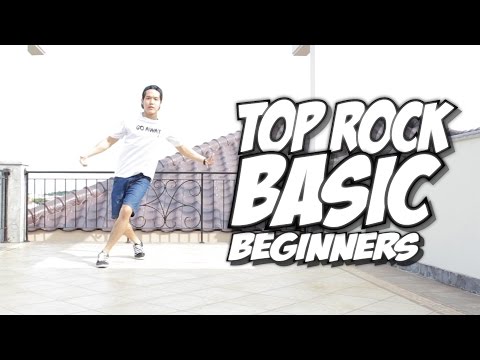 Break Arsenal introduced the style to the public and gradually popularized it.
Break Arsenal introduced the style to the public and gradually popularized it.
In addition to the Break Arsenal, the important bands of that time include the Magic Circle, Mercury, Mirror and Vector.
Soviet children who read the Strugatsky brothers and Kir Bulychev were very attracted by the aesthetics of Afrofuturism. The influence of the school of mimes, which at that time was very popular, also had an effect. The audience was fascinated by the strange futuristic movements of the dancers: they moved like robots, making waves and lunar paths. Some tried to imitate them and looked for an opportunity to learn how to dance the same way.
Learning to breakdance and practicing moves requires a lot of space and mirrors. Dancers gradually settled in palaces and houses of culture. For the first time, breaking courses were organized in the Pravda Moscow Palace of Culture, they were led by circus director Valentin Gneushev. The Pravda school, named after the Palace of Culture where it was located, became one of the most developed: in the future, its students represented Russia at the All-Union Championships and showed break dance in the cinema.
For the first time, breaking courses were organized in the Pravda Moscow Palace of Culture, they were led by circus director Valentin Gneushev. The Pravda school, named after the Palace of Culture where it was located, became one of the most developed: in the future, its students represented Russia at the All-Union Championships and showed break dance in the cinema.
The first break parties where dancers shared new moves were at the dairy cafe. The dairy cafe served food and drinks made from dairy products, such as milkshakes and ice cream. "At the Fountain" (it was simply called "Milk"). It was the first permanent youth cafe in the capital.
“Moloko was a place for a really fashionable pastime, where a wide range of young people gathered: from iron-farmers to variety performers. Makarevich sat there from time to time. Sergei Penkin, Volodya Presnyakov gave some of their first concerts there. Even one of the New Year's lights was filmed there. The place was fashionable, and there we saw the performance of Volodya Ratskevich's Vector group for the first time.
That performance made an indelible impression. Thoughts “I want that too” were not only mine. From that day on, our studio members began to break their bodies for a break " Fragment from an interview with Mila Maksimova.
M. Buster. Hooligans-80. M., 2009..
Also, in 1985, breaking hit the streets. This was facilitated by the opening of the first pedestrian street, the so-called "showcase of perestroika" - Arbat. It was immediately occupied by street musicians, circus performers and break dancers. On the Arbat, a unique Russian style, "upper breakdance", also developed. The reason for its appearance is an incorrect interpretation of Western terms. What we called the top break, in fact, were styles electric boogie Electric boogie is a style that combines smoothness in movement and illusory forms (imitation of waves, robot movements), inspired by the aesthetics of Afrofuturism and the musical environment of New York (funk, electrofunk and other genres).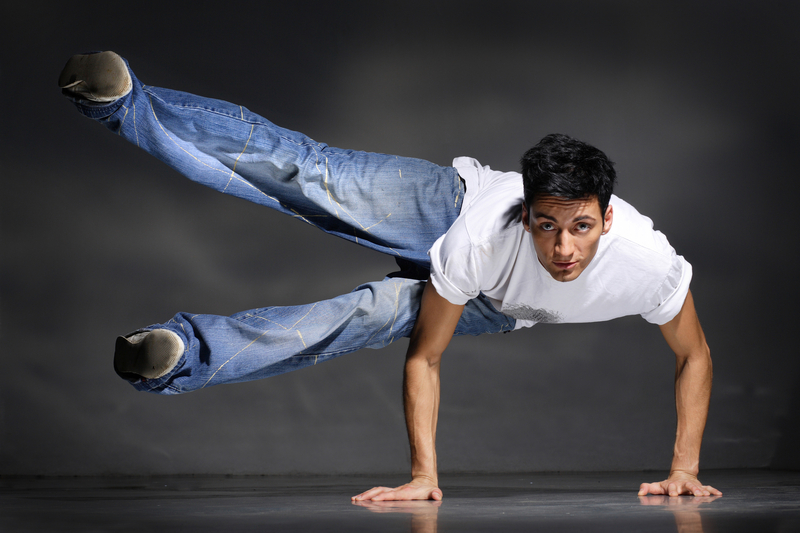 and locking Locking is a social dance with characteristic bright images and the author's style of The Lockers, performed to funk music. Dance movements are interrupted by stops in certain positions, after which the dancer continues to move at his own pace. Russian dancers reasoned something like this: if you spin on the floor, you perform footwork elements0276 footwork - "foot movements"., you dance the lower break dance, as soon as you rise up, blow waves through your hands, imitate a robot or pharaoh Tutankhamen ( king-tut , or tutting ), this is already the upper break -dance. We can say that the term "upper breakdancing" appeared for the convenience of classifying and separating styles.
and locking Locking is a social dance with characteristic bright images and the author's style of The Lockers, performed to funk music. Dance movements are interrupted by stops in certain positions, after which the dancer continues to move at his own pace. Russian dancers reasoned something like this: if you spin on the floor, you perform footwork elements0276 footwork - "foot movements"., you dance the lower break dance, as soon as you rise up, blow waves through your hands, imitate a robot or pharaoh Tutankhamen ( king-tut , or tutting ), this is already the upper break -dance. We can say that the term "upper breakdancing" appeared for the convenience of classifying and separating styles.
At first, upper and lower breakdancing were closely related to each other. Often, performers of the lower style inserted elements of the upper style into their dance. But as it developed, everything became more complicated: people appeared who were exclusively interested in the upper or lower style.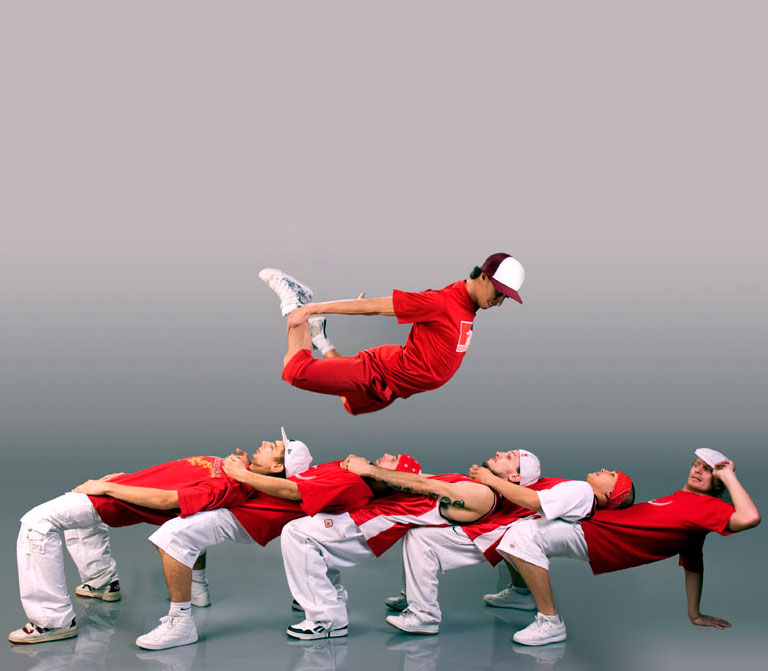 There was a gradual division into the so-called "top" and "bottom". Top breakdance existed in Russia until the 2000s. Its longevity is due to the fact that the first generation of Russian dancers (“old schoolers”) did not want to be retrained and lose their status:
There was a gradual division into the so-called "top" and "bottom". Top breakdance existed in Russia until the 2000s. Its longevity is due to the fact that the first generation of Russian dancers (“old schoolers”) did not want to be retrained and lose their status:
Break dance. Moscow, 1986 © Igor Boyko / RIA Novosti“The fact is that our country was closed until 91-92, information did not flow into Russia and did not flow out at all. Therefore, what has come down to us in 86-87 years - dancers began to grow on that, and their homegrown popping, locking grew - their homegrown tops. <...> When they became interested in what exists in the world, when the curtain opened in front of the West, they saw that everything had changed there so that they had to start learning from scratch if they wanted to dance the same way. But we did not have these sources, bases, roots - we did not know where the tree grew from. So we decided to build a house without a foundation. And a house without a foundation collapses from the first wind.
You need a deep foundation: the deeper it is, the more and better bases you can build on it. And I didn’t want to strain with the foundation - to start from scratch, because it’s a matter of status: they are old-schoolers and everyone respects them. And in order not to lose prestige in the eyes of the students, they did not recognize Western trends. As a result, they remained there, in that century, in that millennium” “I come to Russia to enlighten” // iDance.ru. April 4, 2007..
Now the “upper break” phenomenon is understood differently:
“This desire to learn to dance from scratch is precisely the property of young people in the periphery states. The guys want to learn how to do something like in the center (in our case, in the USA), to make the “correct” and “approved” version of art. And older guys understand that their art is their skill, they are not ready to give up their views on the movement.
And many of these views already at the end of the 10s again aroused genuine interest - the same Savenkov is now very relevant.
What happened in the mid-2000s - passionate youth appeared (like me, Lesha Bugi and Andrey Slide), who could not appreciate the originality of our Soviet school (in my case, in the pursuit of Western "approval", I could not appreciate our culture, unfortunately , it comes with years).
The old schoolers were that foundation. In Europe, which was not a country of the periphery in terms of culture, the "cassette" old school players completely survived and developed their styles, integrated into modern funk culture. Guys like Nils (b-boy Storm) and Steen (Steen) perform in theaters and do top choreography and no one says that it is “wrong” ” Fragment from an interview with Matvey Lebedev (Matt Fownk). Recorded by Olga Krupnik. April 2022..
1986
Video clips, battles and the Courier movie
In December 1986 Karen Shakhnazarov's film The Courier was released. He revealed the topic of generational conflict, and also tried to formulate new ideals and principles of young people in the era of perestroika. "Courier" became one of the leaders of the box office in 1987, and later the best film according to the results of a poll by the Soviet Screen magazine. It was a legendary picture for the Russian breakdance community. In the final scene of The Courier, street dancers show their skills on the courtyard. The song "Rockit" by B.T. & The City Slickers sounds: an arrangement of the canonical track by American composer and pianist Herbie Hancock.
He revealed the topic of generational conflict, and also tried to formulate new ideals and principles of young people in the era of perestroika. "Courier" became one of the leaders of the box office in 1987, and later the best film according to the results of a poll by the Soviet Screen magazine. It was a legendary picture for the Russian breakdance community. In the final scene of The Courier, street dancers show their skills on the courtyard. The song "Rockit" by B.T. & The City Slickers sounds: an arrangement of the canonical track by American composer and pianist Herbie Hancock.
Pupils of the Pravda dance school and other famous dancers, for example, Oleg Smolin and Konstantin Mikhailov from the Mercury group, starred in the film. Then "Mercury" appeared in the films "You Don't Mess With Robots" (1987) from the series of Soviet television plays "This Fantastic World", and later in the musical "The Rattlesnake Dozen" (1988) - in which tap dancers compete with break dance dancers. breakdancing can be found in the films "Publication" (1988) and “My name is Arlekino” (1988) — Moscow dancers appear in their episodes. A year before, the clips of Alla Pugacheva, as well as the Kino group, were released. At the same time, the future pop star Vladimir Presnyakov Jr. released a video for the song "Red Cat", in which he demonstrated the technique of breakdance. The video was shown in the popular program "Morning Mail" on the First Program of Central Television. Another iconic video clip is the work of Alexander Kalyanov "Karabas-Barabas".
breakdancing can be found in the films "Publication" (1988) and “My name is Arlekino” (1988) — Moscow dancers appear in their episodes. A year before, the clips of Alla Pugacheva, as well as the Kino group, were released. At the same time, the future pop star Vladimir Presnyakov Jr. released a video for the song "Red Cat", in which he demonstrated the technique of breakdance. The video was shown in the popular program "Morning Mail" on the First Program of Central Television. Another iconic video clip is the work of Alexander Kalyanov "Karabas-Barabas".
Movies and videos popularized breaking and made it part of popular culture: the audience interested in breakdancing has grown rapidly. Such excitement could not go unnoticed, and breaking received state support. The Ministry of Youth Affairs saw street dance as one of the ways to heal the nation.
Modern Tants Festival. Estonia, 1986 © Community “Break Dance the 80s — Old School” / Fair use there is a regular music festival in the country.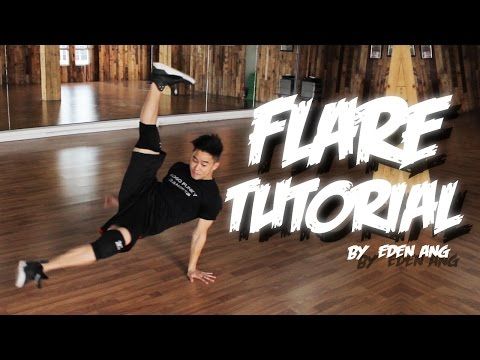 26 April 1986 years in the city of Vinni (Estonian SSR) the first all-Union breaking festival called Modern Tants was held. And in the autumn of the same year, the all-Union final was held in Tallinn, which brought together the best Russian break dancers:
26 April 1986 years in the city of Vinni (Estonian SSR) the first all-Union breaking festival called Modern Tants was held. And in the autumn of the same year, the all-Union final was held in Tallinn, which brought together the best Russian break dancers:
Modern Tants Festival. Estonia, 1986 © Community "Break Dance the 80s - Old School" / Fair use“In 1986, an all-Union break dance competition was held in Tallinn. This was done by local Komsomol members, who were well prepared. We rented the entire Sport Hotel and settled it with delegates from Minsk, Kyiv, Riga, St. Petersburg, Kharkov, and, of course, Muscovites. There were 100 participants alone. At the same time, everyone went with support groups, pretended and noisy. When all this crowd gathered in the hotel, the attendants went crazy. Loud music played around the clock. In all the corridors, the participants were rehearsing and fans were wandering around; there was a feeling of complete happiness. By the way, there were no drunks, which, you see, is not typical for a subculture ” A fragment from an interview with Mila Maximova.
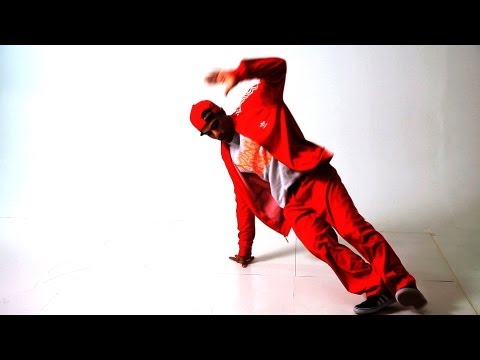
M. Buster. Hooligans-80. M., 2009..
Most of the breaking festivals were held in the format of battles. Battle is the main communication tool for street dancers. It is a dance opposite each other, while the performers are surrounded by people. In fact, the battle is a continuation of the folklore tradition, the transfer of rural dance practices to the city. The dancers take turns doing their exits, demonstrating their technique and telling their story. Dance itself is a means of communication. Accordingly, a battle is a conversation between two dancers, an exchange of dance information.
As in a good conversation, a whole new dance idea, movement or concept can be born at a battle. An important role is also played by the skill of improvisation, that is, the creation of new movements without preparation. Street performers understand dance as a job that requires many hours of training to achieve results: this brings breakdancing closer to academic dance.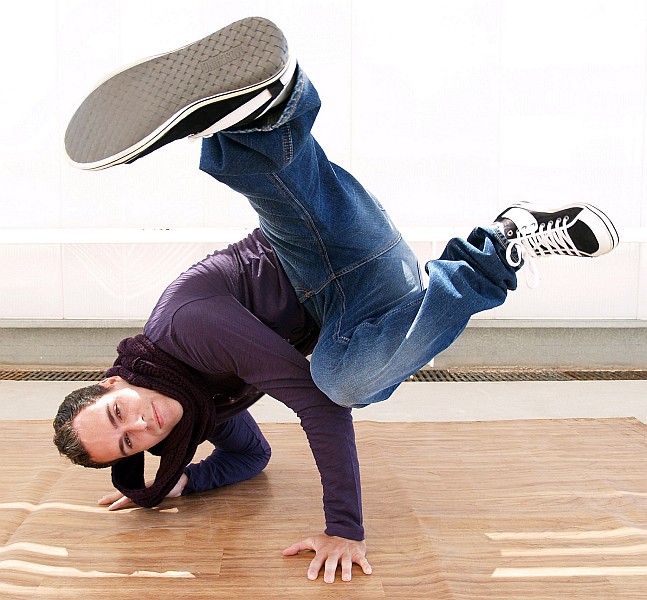
Later, battles became a part of professional activity for dancers. By participating in them, they remain visible and continue to function in the community as educators or judges. Despite the fact that breakdance battles can look quite aggressive, the participants consider them primarily a cultural exchange. Some demonstration battles are called that - exchange (from English - "exchange").
1987
Lubera, breakers and informal culture
Participants of the break dance school at the Prioksky Palace of Culture. Ryazan, 1987 © Vitaly Karpov / RIA Novosti
By 1987, breakdance had gained an all-Union scale. Festivals were held not only in the Baltic States, but also in Russia, Belarus and Ukraine. The competitions lasted for several days and were broadcast on local television. In parallel with the dawn of the breaking culture, informal associations also developed: rockers, hippies, punks, metalheads, as well as luberas (or lubers) - aggressive young guys from the city of Lyubertsy near Moscow.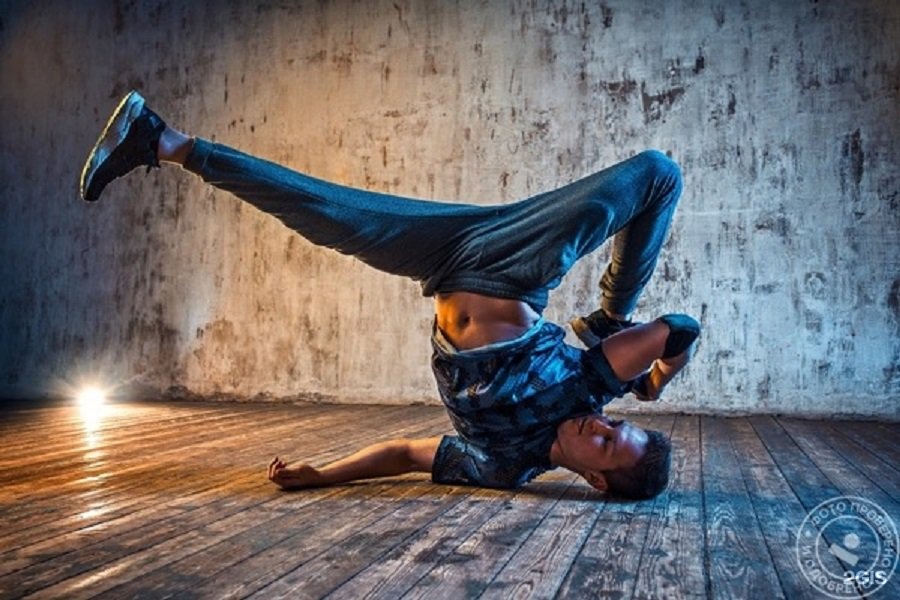 They actively promoted a healthy lifestyle and were at enmity with fashionable informals. Luber was mostly not touched by breakers because of respect and love for the sport. However, it went to those who looked too fashionable or "ironed" That is, they were a farce. items:
They actively promoted a healthy lifestyle and were at enmity with fashionable informals. Luber was mostly not touched by breakers because of respect and love for the sport. However, it went to those who looked too fashionable or "ironed" That is, they were a farce. items:
“At the same time, of course, groups of Lubers cruised around the city and often watched the breakers, but did not particularly touch them. Apparently, related sports styling and a dismissive attitude on the part of radical informals, with whom they began a real war, had an effect. Back in 86, I met a guy who lived on Zhdani, who at first gravitated towards the break, and then, already in 88, I met him, but already in a bull suit and with other interests in his head. He then indicated to me that we do not touch the breakers, but only drive the majors, irons and radicals. At the same time, the breakers themselves, willy-nilly, were forced to do ironing in order to “keep the style” and “be in the know” ” Fragment from an interview with Ilya Pincher.
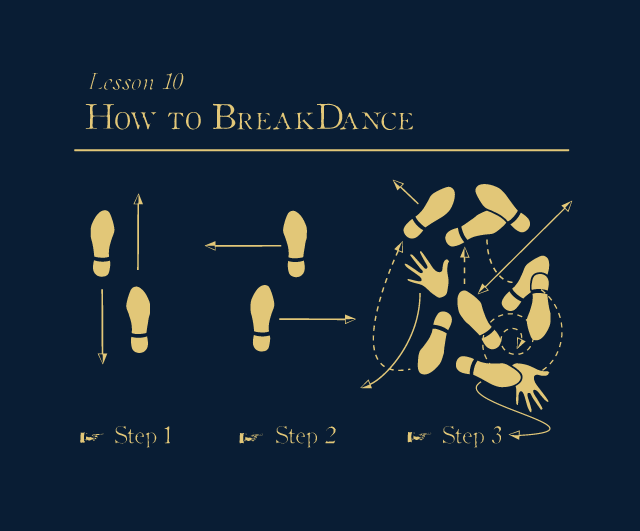
M. Buster. Hooligans-80. M., 2009..
In 1987, a film by Latvian director Juris Podnieks “Is It Easy to Be Young?” was released. The film told about the Soviet youth of the early 1980s: their desires, dreams and difficult relationships with their parents. In a sense, he formulated the meaning of informal associations for young people of this era.
Juris Podnieks. "Is it easy to be young?". 19871988
Russian rock triumph
Still from the film Assa. Directed by Sergei Solovyov. 1987 © Mosfilm Film Studio; Creative Association "Krug"
In 1988, Sergei Solovyov's film "Assa" was released. He immediately approved the unconditional triumph of Russian rock. A vinyl record with songs from "Assy" became one of the first official publications of Russian rock music. The soundtrack included compositions by Boris Grebenshchikov and the Aquarium group, the Bravo group with Zhanna Aguzarova and the Kino group:
The soundtrack included compositions by Boris Grebenshchikov and the Aquarium group, the Bravo group with Zhanna Aguzarova and the Kino group:
Youth on the streets of Minsk. 1988 © Evgeny Koktysh / RIA Novosti“Sergey Solovyov broke me even more, who almost invited me to the main role in his Assu. Few people know that at first he wanted to mix the artistic part of the film with breakdance. We went to Mosfilm, even did screen tests. But then Solovyov went to St. Petersburg, and they convinced him there that break dance was already going down, and the new wave was rock music. Then he decided to bet on rock, chose Africa for the main role according to my type, and transferred the musical part to Kino, Aquarium and other St. Petersburg groups. While the film matured, this wave really came up. ” History of Russian breakdance // School of breakdance "Volnorez". 2013..
The breaking wave was indeed gradually fading away.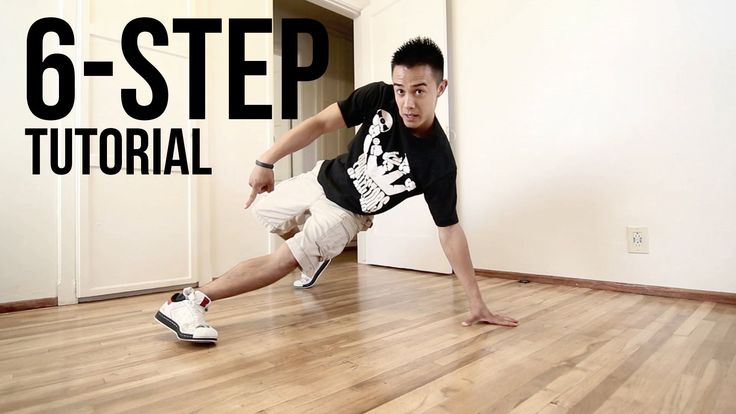 Many dancers were taken to the army, the rest started families. The Pravda Palace of Culture was closed, and smart children's groups began to dance break dance. So the style faded away.
Many dancers were taken to the army, the rest started families. The Pravda Palace of Culture was closed, and smart children's groups began to dance break dance. So the style faded away.
But the most enthusiastic b-boys B-boy/b-girl (eng. b-boy / b-girl) - a person who dances break dance. continued to perform on the Arbat and delve into the history of style. They began to understand breakdancing as part of the hip-hop culture, which includes not only dance, and discovered rap for themselves:
“Back in 1988, everyone knew that there was not only break, but also rap, so attempts to read were made repeatedly. Timur Mammadov, I remember, on the Arbat, on April 1, when people were dancing on the stage and for some reason the tape recorder did not work, he composed on the go and read this to the clapping rhythm ... Like: “So, friends! As you can see, we are breakers from the city of Moscow. I won’t surprise you with this, I’m starting to rap…“” Fragment from an interview with Ilya Pincher.

M. Buster. Hooligans-80. M., 2009.
1989 and early 1990s
From breakdance to rap
In 1989, the first rap groups appeared. The dance group "Mercury" has transformed into a rap group DMJ, consisting of two soloists and three dancers. The hip-hop duo "Black and White" took on break dancers from the "Stop" team.
1989 - the year of the founding of the Bad Balance team: it was formed from the White Gloves break dance group. At 19In 1990, the well-known musician and singer Mikhey joined her. Later they became legends of the local hip-hop culture. The team members not only wrote music and rapped, but also danced break dance. And in 1991, the group "Bachelor Party" appeared, consisting, in fact, of Arbat street dancers.
Group "Bachelor Party" © Rock 'n' Roll Wiki Further development of breaking took place already within the hip-hop culture. Strong horizontal links have developed between dance, music and art (graffiti). People moved from one type of creativity to another, spent time together and organized events.
People moved from one type of creativity to another, spent time together and organized events.
The first wave of breakdancing was marked by protest and street action, which was later compensated by sports (numerous championships) and cultural (joint hangouts and events) projects. However, the subculture is inextricably linked with the protest: it gives energy for development and social unification, which is difficult to replace with something.
“I started in the late 90s, and for us it was also a protest. We protested against the attempts of schools, sports clubs and parents to turn young people into a gray mass, who had to dress so as not to stand out, not to listen to loud music and so on. It was a protest against something different than in the 80s, but it was one hundred percent" Fragment from an interview with Jan Nemalovsky. Recorded by Olga Krupnik. 2022..
In the future, breaking has become more professional in terms of technique, and intercultural exchange has become stronger.


